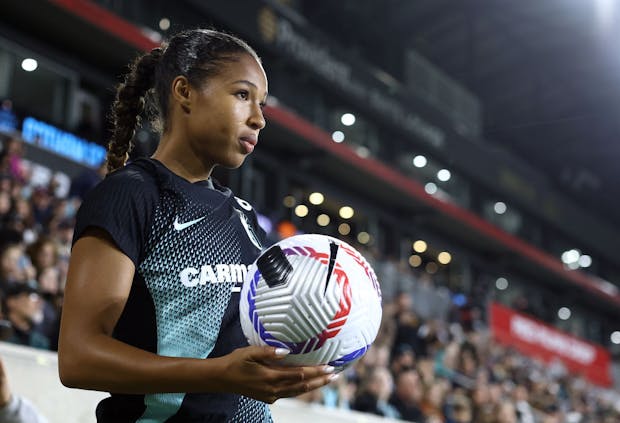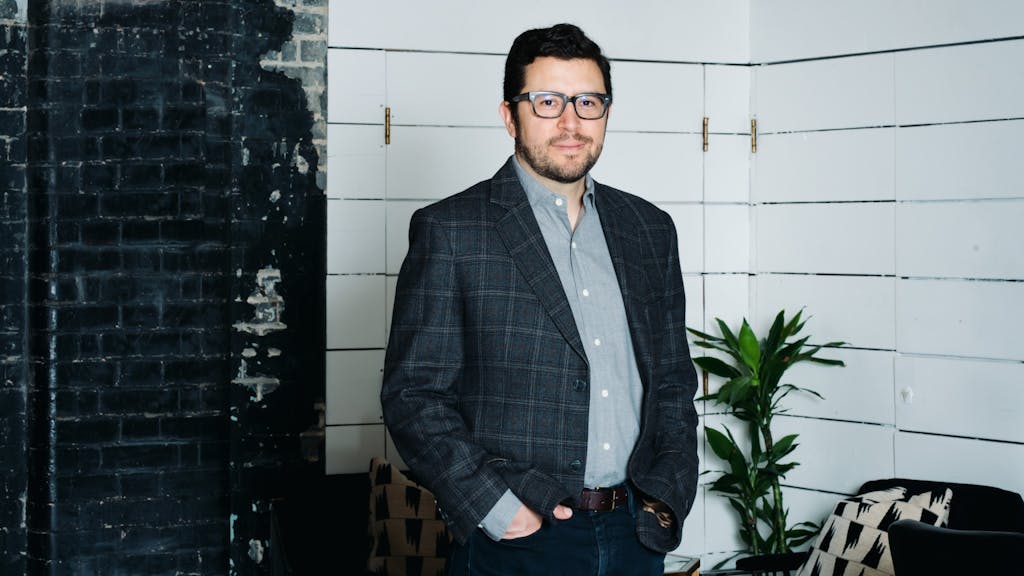
The 2026 Fifa World Cup in North America coupled with a “bet” on the US market coming to fruition will help Footballco exceed $100m (€87m/£75m) in revenues next year, according to chief executive Juan Delgado.
The US growth will also help spur a 15-per-cent Ebitda (earnings before interest, taxes, depreciation, and amortisation) profit margin in 2026, Delgado predicted.
The financial performance of the TPG-owned football media company is traditionally skewed by large advertising campaigns in the lead-up to and during major men’s international football tournaments, most notably the World Cup.
The UK-based Footballco, which reports its annual results in pounds sterling, recorded £52.6m (€61.6m/$70m) in revenue in 2022 with around $20m generated by revenues associated with Qatar 2022, including a heavy outlay by Dubai Tourism. Ebitda of £1.1m was recorded.
Following a 17-per-cent drop in revenue to £43.4m in 2023, Footballco’s 2024 revenue recovered to around its 2022 level and is projected to reach between £55m and £60m in 2025.
“It’s getting to a point where I believe – given the World Cup surge we’re going to see next year – we’re going to comfortably cross the $100m [revenue] mark”, Delgado told SportBusiness.
“Even though Europe is still over 50 per cent of our revenues and it’s very profitable, it’s also more mature. It’s growing but at 5 to 7 per cent per year which, for a private equity-backed business like ours, it’s not such an interesting market [for investors].
“But the Middle East has gone from single-digit millions [revenue] to well over $20m in three years and the US is a great success story.”
While an Ebitda loss of £1.8m was recorded in 2023, the total loss ballooned to £51.3m on the back of an accounting adjustment for impairment to goodwill of £42.8m.
Footballco, sold by DAZN Group in 2020, relies on advertising for the lion’s share of its revenues. That share is on the wane, however, as it builds up revenue from its transactional “affiliate business” – receiving payments to redirect users to bookmakers or streaming platforms to open an account, or to buy tickets.
Affiliate revenues rose from £2.5m in 2022 to £3.6m – or 8 per cent of all revenue – in 2023. They are thought to have reached north of £8m last year. There are only minimal costs associated with creating editorial on betting or where to watch certain live sports events, so the margin is often much greater compared to producing content to be supported by advertising.
‘Eight-figure bet’
At the end of 2023, Footballco made what Delgado described as an “eight-figure bet” in the US, building up editorial and commercial teams, investing in content creators and influencers while also signing up leagues to content deals.
The US pivot comes not only ahead of the 2026 World Cup, but also amid the rapid maturing of the women’s sports sector stateside and the growth in Major League Soccer (MLS) franchise valuations.
“It’s the biggest media market in the world,” he observed. “For what you sell a test [advertising] campaign in Europe for close to six figures, in the US it will sometimes be mid six figures.”
That spend is increasingly coming from brands that previously advertised in women’s fashion and lifestyle publications but are shifting their focus to women’s sports, and particularly women’s football.
The team is led by Jason Wagenheim, recruited from lifestyle publisher Bustle Digital Group at the start of 2024 to the newly created position of CEO of North America.
Indivisa, the women’s football platform launched in 2022, and Footballco’s flagship Goal platform are the company’s leading outlets in the US market.
“In 2020 when we pulled the business out of DAZN, we had barely any US revenues,” reflected Delgado. “We’re now building a business that’s getting sizeable and a good chunk of that is women’s soccer.”
Footballco has made it into ComScore’s top 20 for US digital sports platforms in two of the last six months. The traffic is chiefly driven by Goal and Indivisa, topped up by Arabic expatriates using Kooora.
In November last year, the MLS playoffs and Uefa Champions League fixtures helped Footballco to occupy 19th place in the rankings with a ‘Total Digital Population’ reach of 16.3 million.
For Footballco, in which DAZN retains a 25-per-cent shareholding, penetrating the top ten is the aim to allow it to “start to trade and do up-fronts in a different environment than where we are today”.
Limited M&A opportunities
Investment from TPG has funded acquisitions in other markets, including Kooora and Italy’s CalcioMercato.com, but growth in the US is more likely to be organic.
“The competitive set in that for us to go and do some M&A is fairly limited,” said Delgado. “You have great content creators like Men in Blazers or Just Women’s Sports. But everything else sits with one of the big media companies, be it ESPN FC, CBS [Sports] Golazo, Univision or Fox.
“The M&A field is fairly limited…but for the three or four of us leading in digital, the market is fairly big and can sustain growth for all of us, even post [2026] World Cup for the next few years.”
The “bigger bets” that Footballco is set to make will be closer collaboration with content creators to build the audience. Goal’s ‘Front Three’, the creator-led football game show, has garnered 621,000 YouTube subscribers and 303,00 TikTok followers.

This is supplemented by partnering with rights-holders, widening engagement while targeting the sponsors of leagues as advertisers. Putting down rights fee sums for highlights or clip rights remains a peripheral part of the business, as Delgado recently told SportBusiness.
Footballco last month announced the extension of its MLS highlights content licence agreement to cover the 2025 season.
Those rights sit alongside a three-season deal for worldwide digital highlights clips from the National Women’s Soccer League (NWSL), plus a one-season agreement for English Football League (EFL) clips. Footballco’s annual rights spend across all properties, thought to be in the region of £1m, is focused on US properties and viewed as a necessary investment to amplify editorial content and programming.
“We’re not allergic to highlights [rights deals] but clips in themselves are not going to generate any value for you,” reflected Delgado. “It’s the access [to players and celebrities] or insertion of footage in a storyline that may make your content better but it’s always down to the format and the creator.”
Mena ad spend
Compared with the US, Delgado is not predicting the same pace of growth in the Middle East and North Africa. Nevertheless, he is confident in the “huge” potential of Kooora, acquired for upwards of $25m in 2022, and Goal’s Arabic-language version in a region characterised by a young demographic hungry for football content.
Like swathes of rights-holders and publishers, Footballco sees Saudi Arabia, the 2034 World Cup host, as a continued source of significant spending to promote the country as a sports and tourism destination.
Footballco was appointed by the Saudi Pro League at the start of the year to launch an English-language YouTube show.
However, both Qatar and the United Arab Emirates continue to invest in advertising around football after the 2022 World Cup in the region. Dubai Tourism, Qatar Airways and Qatar Tourism all remain key clients.